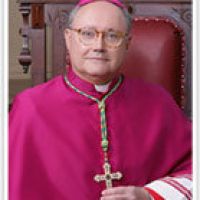Fun liturgical nerd stuff here. Benedetto XVI Forum has translated this from the Holy See's newspaper. At least I find it interesting :). The translator makes some remarks and I have that in red.
Pope to introduce ritual changes in the February consistory Translated 1/7-1/8/12 .
The rites that have been used till now for the creation of new cardinals have been revised and simplified with the approval of the Holy Father Benedict XVI.
These changes are:
- The three steps of imposing the beretta, consigning the cardinal's ring and assignment of each cardinal's titular or diaconal church, will now take place at one rite - namely, the so-called public consistory.
- The Collect and concluding prayers for this public consistory will be changed.
- The proclamation of the Word of God at the public consistory will take a briefer form.
"It must be noted," says the Office of Papal Liturgical Celebrations, "that reforms carried out after the Second Vatican Council also covered the consistorial rites of imposing the beretta and assigning the church titles to the new cardinals, and that the reformed consistorial rite is found in Notitiae 5, 1969, pp. 289-291, and used for the first time by Paul VI in April 1969 [It happens to be the consistory at which Archbishop Karol Wojtyla of Cracow became a cardinal. The two rites mentioned were covered by the liturgical reform because they took place during Mass the day after the public consistory]. The principal criterion for the revision was to include the actual rite of creating new cardinals (the public consistory) into the liturgy, of which it was not properly a part. It is now thought that the naming of new cardinals should take place in a prayer context withou, however,t giving it the character of a 'sacrament' for the cardinalate, as Holy Orders are.
Historically, the public consistory was never considered a liturgical rite, but a meeting between the Pope with the cardinals in relation to their role in the governance of the Church, and therefore, an expression of the munus regendi (task of governance) rather than of the munus sanctificandi (task of sanctifying).
The new revisions take into consideration aspects of the consistories in the historic and recent past, and in continuity with the present form of the consistory and its principal elements. The Collect and concluding prayer of the 1969 ritual for the public consistory are rich in content and come from the great Roman eucologic or prayer tradition [eucology is the study of prayers].
The two prayers speak explicitly of the powers entrusted to the Princes of the Church, particularly the powers of Peter. The Pontiff prays directly for himself that he may carry out his office well. The Collect prayer that comes from the Veronense - also called the Sacramentrium leonianum, which is one of the oldest sources of Roman eucology - is the Collect for the anniversary of the episcopal ordination of the Bishop of Rome (Mense Septembris, in natale episcoporum, v alia missa. nn. 989 e 993; Corpus Orationum, n. 2301)
The Holy Father says, "Oremus. Domine Deus, Pater gloriae fons honorum, qui licet Ecclesiam tuam toto orbe diffusam largitate munerum ditare non desinis, sedem tamen beati Apostoli tui Petri tanto propensius intueris, quanto sublimius esse voluisti: da mihi famulo tuo providentiae tuae dispositionibus exhibere congruenter officium; certus te universis Ecclesiis collaturum quidquid illi praestiteris, quam cuncta respiciunt. Per Dominum nostrum Iesum Christum, Filium tuum, qui tecum vivit et regnat in unitate Spiritus Sancti, Deus, per omnia sæcula sæculorum». [Sorry, I cna find no English translation of the prayer, which asks God to grant his providence on the Successor of Peter in carrying out his mission for the world.]
The concluding prayer, also taken from the Veronense, is from another Collect for the anniversary of the episcopla ordination of the Bishop of Rome (Mense septembris, in natale episcoporum, v alia missa, «alia collecta», nn. 992; Corpus Orationum, n. 1198). The Pope prays thus: «Deus cuius universae viae misericordia est semper et veritas, operis tui dona prosequere; et quod possibilitas non habet fragilitatis humanae, tuis beneficiis miseratus impende; ut hi famuli tui, Ecclesiae tuae iugiter servientes et fidei integritate fundati, et mentis luceant puritate conspicui. Per Christum Dominum nostrum».
The proclamation of the Word of God will take on the brief form from 1969, with a single Gospel passage - that from Mark 10, 12-45. Finally, the consignment of the cardinal's ring wil take place at the same time as the imposition of the beretta.
Before 1969, the berettas were given out at the public (non-liturgical) consistory, while the rings and assignment of titular churches was done at the Mass (once considered the secret consistory) the day after. But there is no longer any distinction between the public and 'secret' consistories, therefore it seems logical for all three steps in the creation of new cardinals to take place in one ceremony.
Nonetheless, the Mass concelebrated by the new cardinals with the Pope (during which the consignment of the cardinal's ring and assignment of titular churches and diaconates had taken place) will still be held the day after the public consistory.
The Mass will start with a greeting to the Pope by a representative of the new cardinals int he name of the others.
Sunday, January 8, 2012
Pope Benedict To Do New Liturgy Rite In Making February 2012 Cardinals ( From the Vatican Newspaper )
Posted by
James H
at
1/08/2012 12:39:00 PM
![]()
Labels: Catholic, Liturgy, Pope Benedict, vatican
Subscribe to:
Post Comments (Atom)















No comments:
Post a Comment